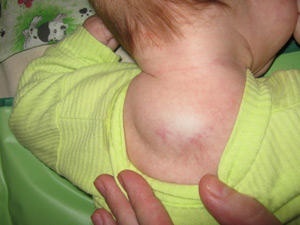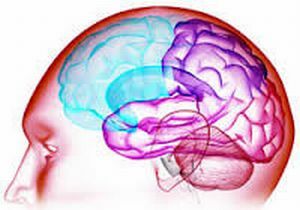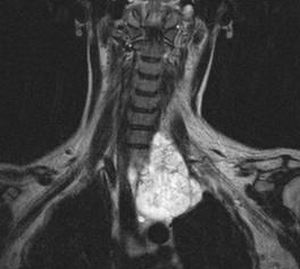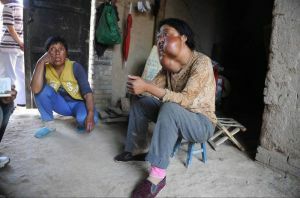 According to statistics, tumors in the bones are among the most rare among cancer diseases( no more than 1% of cases annually).
According to statistics, tumors in the bones are among the most rare among cancer diseases( no more than 1% of cases annually).
However, mild symptomatology and difficulty of treatment make bone cancer a very dangerous problem.
More often bone cancer occurs as a secondary neoplasm due to metastasis and spread of a soft tissue tumor.
When the cancer is primary and originates from the bone itself, the symptoms of its appearance are blurred in the early stages, and do not cause anxiety in the patient, which causes the treatment to begin too late.
In addition, another basis for characterizing bone tumors is their resistance to radiation, and, in some cases, to chemotherapy. To such rare cases is chordoma.
Contents of the article
- Tumor types
- Mechanism of development of pathological formations
- What is the reason for the appearance of the tumor?
- Tumor process location
- Risk factors for developing
Developmental stages of the disease
- Emergence and asymptomatic tumor growth
- First manifestation of
- Stage last-lethal
- Diagnostic methods
- Treatment method - solely operation
- Prognosis adverse
- Prophylactic methods
Tumor types
Chordoma is rareeven among primary bone tumors - in only 16% of cases.
In general, this means that out of 1 million chordoma people fall ill every year only two or three, but almost every case is fraught with serious complications.
About this disease, modern medicine has a relatively small amount of information.
Three types of tumors were identified according to histological features:
- Chondroid - similar in construction to chondrosarcoma, slowly growing and not metastasizing, which is why the prognosis is more favorable.
- Ordinary - has a higher growth rate, in 10-30% of cases it gives metastases after a long period of asymptomatic development.
- Undifferentiated - behaves most aggressively. The growth is rapid invasive with active metastasis.
Mechanism of development of pathological formations
Reproduction of cancer cells in this case begins from areas with remains of embryonic chord( notochord).
It grows very slowly and imperceptibly, and in the early years of the development of the chondroma gives general symptoms: headaches, pain at the site of tumor development, temporary numbness of the extremities. 
Because of these features, this tumor can be classified as benign neoplasms.
On the other hand, the deep location of the tumor complicates access to it, necessary for treatment.
In the case of common and undifferentiated chordoma, relapses occur frequently and quickly( within three years), constant operations and examinations are required.
Because of this, it is impossible to call this tumor benign. To date, any oncologist doctor will advise a patient to remove the chordoma, even if its malignant properties have not yet manifested itself.
What is the reason for the appearance of the tumor?
In addition to the main carcinogens( malnutrition, alcohol, smoking, lack of exercise, papilloma and hepatitis B viruses), it is not yet possible to name the cause of chordoma.
Statistically, there are no specific patterns of the appearance of this tumor, nor is the fact of its transmission by inheritance.
Localization of the tumor process
Since chordoma arises from the remains of the notochord, the area of its localization occupies the entire spine.
The tumor most often appears on its edges - in the sacrococcygeal and basal-occipital regions( approximately 50 and 35% of cases, respectively).

On the photo of the skull base chordoma
The remaining 15% account for the chordoma of the mobile parts of the spine( mostly cervical).
With cranial localization, the tumor is usually located in the area of the Turkish saddle, craniovertebral junction and ramp.
Because of this operation to remove it requires the participation of several highly qualified specialists( spinal neurosurgeon with the habit of stabilizing the craniovertebral junction, resuscitator).
Risk factors for the manifestation of
It is known that men develop choledoma of the sacrum approximately twice as often as women, but there is no gender difference for basal occipital disposition of the tumor.
The lesion in the sacrococcygeal zone is typical for people older than 50 years, and at the base of the skull it occurs mainly in patients older than 35 years.
Stages of development of the disease
The disease can be conditionally divided into three periods.
The onset and asymptomatic growth of the
tumor Occurs unnoticed for the patient, and therefore usually does not respond to treatment.
In rare cases, the tumor in the early stages of development is found when X-rays are made for other purposes( examination of injuries of the spine and muscles of the cervical and spinal sections, lung diseases, brain and others).
Manifestation of the first symptoms of
Because the tumor grows from the bones, it can press on its critical areas of soft tissues, such as nerve endings, spinal cord or arteries.
The resulting symptoms vary in the localization of the chordoma:
- in the sacrococcygeal region of : bladder and rectum dysfunction due to compression, numbness of the legs due to vascular compression, peripheral paresis of the legs, pain at the site of neoplasm development;
- at the base of the skull : headaches, coordination problems, dizziness, visual and hearing impairments, swallowing reflex failure, vocal cord disorders, and pain in the tumor growth zone;
- with chordoma of the spine : back pain, bowel dysfunction, paresthesia and paralysis of the limbs( more often legs), men may also have erectile dysfunction.
In any case, with the growth of education a typical clinical picture of intoxication arises( hyperthermia, weakness, lack of appetite) typical for cancer.
Stage last - lethal
Growth of neoplasm, metastasis, infiltration of adjacent organs and bone destruction.
At this stage chordoma is almost impossible to cure. Cancer spreads throughout the body and disrupts the vital organs.
Diagnostic methods
In the early stages of the development of the disease, a suspicion of a tumor can occur with a neurological examination. It gives the doctor an idea of the localization and focal symptomatology of the tumor, and becomes the reason for general radiography.
Education is detected radiographically, according to a bone defect in the image. Confirmation of the diagnosis occurs by histological examination of the biopsy material of the affected bone site. 
To determine the size, shape and structure of the tumor, as well as determine its dangers by the presence of metastases and germination in neighboring tissues, the attending physician prescribes computer or magnetic resonance imaging.
In some cases, angiography, pneumoencephalography and scintigraphy help determine the extent of bone and surrounding tissue damage.
Method of treatment - solely operation
Because of the inadvisability of radiotherapy and chemotherapy, surgery is prescribed for chordoma. Resection( complete excision) of a tumor with a capsule is performed.
When the neoplasm is localized in the spine, resection of the vertebral bodies is performed using the method of corporeal or spondylectomy with the plastic of the defect that has arisen.
In case of tumors of the sacrum, resection is performed by the block( en block) with back and combined access.
When the tumor grows in the cranial region, endoscopic removal is performed by the transoral, extradural, transmaxillary pathway.
It is also possible to treat a tumor with radiotherapy using modern devices( cyber-knife, gamma-knife).
 As already mentioned, chordomes are resistant to chemotherapy.
As already mentioned, chordomes are resistant to chemotherapy.
The first surgery to remove the tumor is the most important and significant, therefore for its effective conduct it is important to find an experienced specialist who can make the right treatment plan and coordinate the actions of several doctors in accordance with this plan.
If a local relapse occurs, a complete cure for the disease becomes unlikely.
Prognosis unfavorable
Because of frequent relapses and late metastasis, the percentage of five-year survival of patients with aggressive forms of chordoma does not exceed 30, so the prognosis is conditionally unfavorable.
With chordoma of the sacrum and combined treatment( operation with radiotherapy), depending on the experience of doctors, the survival rate for 5 years fluctuates between 72-90%, and the probability of relapse is 35-47%.
Preventative methods
No specific preventive measures to prevent chordoma have been developed due to the unknown cause of the disease.
Recommendations of doctors usually repeat the text of the brochure of the World Health Organization:
- exercise;
- do not expose yourself to bad habits;
- observe personal hygiene;
- use products with anti-carcinogenic components( vitamins, trace elements, capsaicin, lycopene and other plant compounds).



